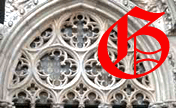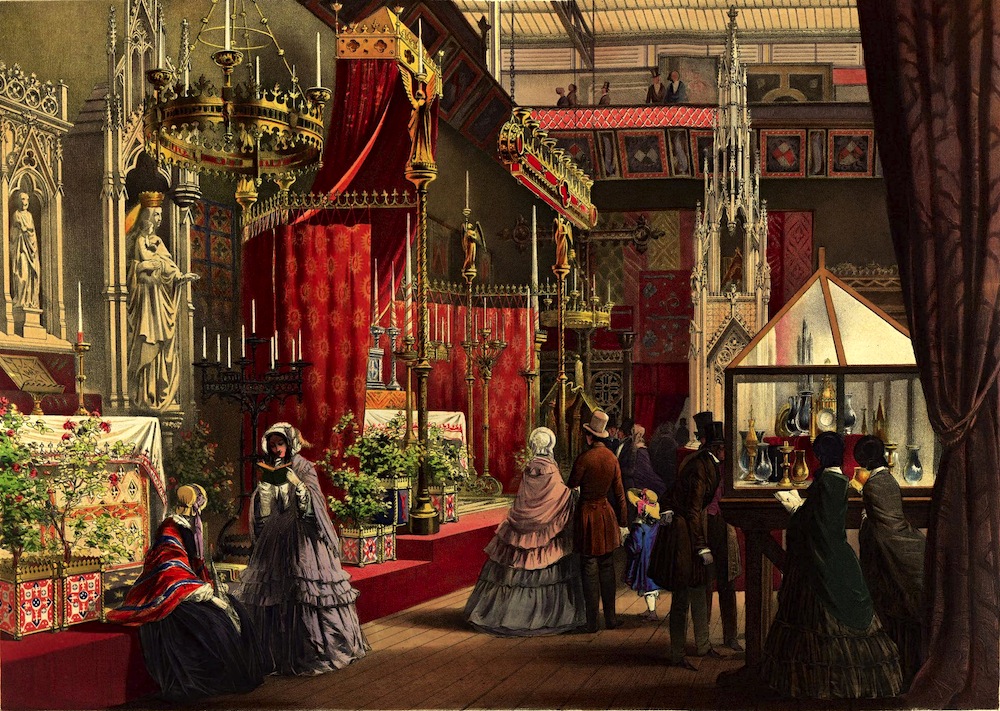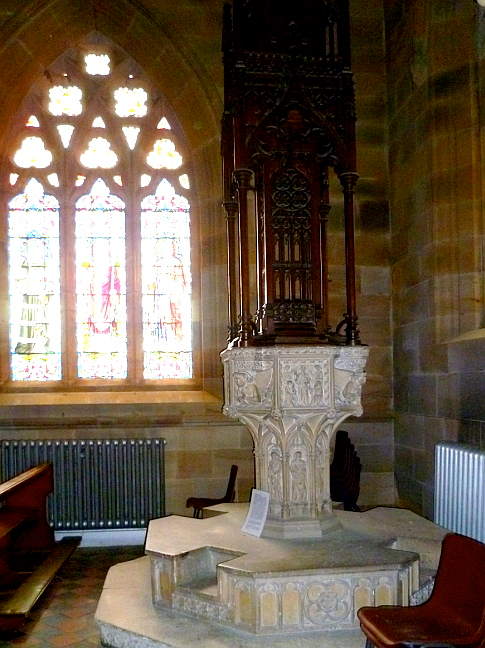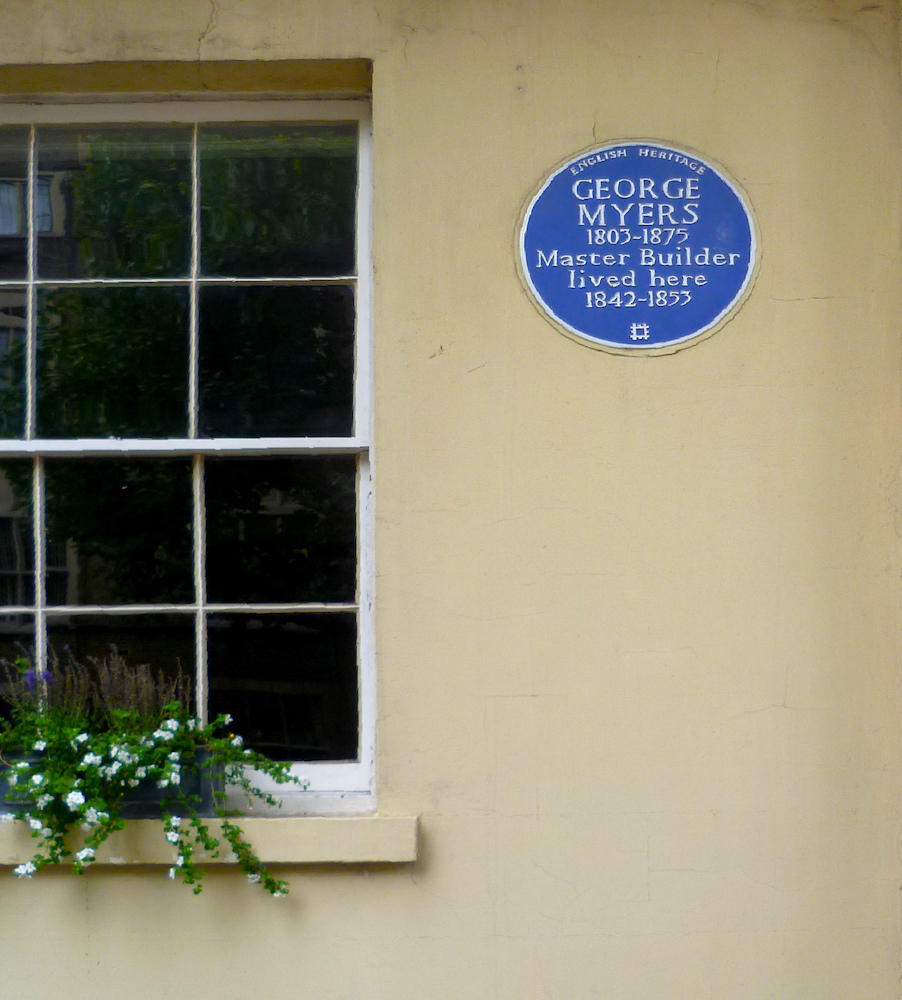
eorge Myers (1803-1875) is often termed "Pugin's Builder" — indeed, that is the very title of his most detailed and reliable biography to date, by Patrica Spencer-Silver. Yet, as Spencer-Silver herself tells us, he was much more than that: he was "one of the great master builders of the Victorian age" (x). The list of his known contracts, numbering 240, runs to nearly fifty pages, and Pugin was just one of the many architects for whom he worked, among them such important figures as Sir George Gilbert Scott, Sir James Pennethorne, and John Loughborough Pearson. "Phlegmatic, hard-working, with a square jaw and a high complexion, and a forehead that seems to have worn a perpetual frown of concentration" (Hill 194), Myers was phenomenally energetic, so that it is hard to find anywhere in the land where he did not contribute to the built landscape.

As Spencer-Silver says, "family details are vague" ("Myers, George"), but he was born in Kingston upon Hull, Yorkshire, the son of a "whitesmith" or metal-worker, and is known to have been apprenticed to William Comins, the master mason at Beverley Minster. Here he grew to love Gothic architecture — and here he first met and made a good impression on a certain young would-be architect, A. W. N. Pugin: "He [Myers] was then a working man in that town," explained Pugin's first biographer, Benjamin Ferrey, "and while Pugin was sketching at the Minster, rendered him some assistance in procuring ladders and scaffolding to enable him to reach the lofty portions of the building, manifesting much interest in Pugin's proceedings" (185). It would be another ten years before the two met again, but that first encounter was not forgotten.
In the meanwhile, Myers completed his time with Comins, returned to Hull and built up his business there, entering into a partnership with another stonemason, Richard Wilson, in 1831. From Hull, in 1837, he successfully tendered for the contract to build St Mary's Roman Catholic church in Derby, Pugin's first important project. Meeting Myers again, Pugin recognised him and is said to have embraced him, declaring, "My good fellow, you are the very man I want, you shall execute all my buildings" (Ferrey 185-86). Whether or not those were his exact words, the two men's relationship was fixed from then on: "It would have been difficult, if not impossible, for him [Pugin] to have found another builder with Myers's knowledge of medieval Gothic who was also capable of working from Pugin's sketchy drawings. They became true friends and collaborators" (Spencer-Silver, "Myers, George").
Myers would indeed execute many big contracts for Pugin, including four more Catholic churches that later became cathedrals. One of these was St George's in Southwark. Myers knew Pugin's ways so well, and was trusted by him to such a degree, that he could fill in the details of the plans himself and needed little supervision. This was certainly the case at Albury Park, home of the banker Henry Drummond, one of the founders of the Catholic Apostolic Church (see Hill 501). Even at St Giles, Cheadle, which is widely considered Pugin's masterpiece, Myers was the one who "translated Pugin's few sketches into high-quality masonry and timber-work" (Lewis 30). The high point of the two men's collaboration was the medieval court at the Great Exhibition of 1851, which was a great success. It was not without its problems. For instance, Myers infuriated the decorator John Gregory Crace (1809-1889) by placing an elaborately carved cabinet of his own, with his name prominently affixed, among Crace's items of furniture. Intentionally or otherwise, most probably the latter, his handiwork seemed to compete with or even eclipse Crace's. He did, in fact, win a medal for his exhibits.



Right to left: (a) The Medieval Court. Source: Nash, Vol II, XII. (b) The font in its present context — at St Augustine's, Ramsgate. (c) New Offices of the National Provident Institution, Eastcheap, built for the architect Professor Kerr in 1863. [Click on the images to enlarge them, and for more information about them.]
The variety of the items on show here certainly demonstrated his versatility. They ranged from religious fittings like the font which is now at St Augustine's in Ramsgate, and the tomb and effigy for Dr Walsh, destined for St Chad's, Birmingham, to other items for domestic spaces, like a fireplace and a copper casement. When Pugin died in the following year, Myers would carve the effigy for his tomb, designed by E. W. Pugin, in St Augustine's (see Spencer-Silver, Pugin's Builder, 44-45 and 244).

Blue plaque marking Myers' home in Lambeth from 1842-1853 (author's photo).
Myers had already moved to London by now, where he leased a house in Southwark, still to be seen close to St George's, and now honoured by a blue plaque. He set up his workshops in Lambeth, near Westminster Bridge, and Spencer-Silver writes that there "his craftsmen carved, sculpted, made furniture and also made the patterns for some of the metalwork produced by John Hardman (1811–1867) of Birmingham. With his yards on the bank of the river and Waterloo Station nearby, transport was no problem and he was well equipped to take a leading part in the great building boom of the 1850s and 1860s" ("Myers, George"). He did indeed take part in this boom, but also fulfilled contracts for the government, and worked on a huge variety of projects, including impressive office blocks in the city, like the National Provident Institution, Eastcheap, as well as hospitals and barracks. At the military town of Aldershot, in addition to barracks, he built a residence for the royal family, for those occasions when they were visiting, and the Prince Consort's Library, still renowned today. Spencer-Silver relays a lively picture of Myers as a "red bearded, frockcoated contractor with his stove pipe hat, driving his high-wheeled gig" around his works in Aldershot (qtd. p. 136). He rebuilt the Queen's Chapel of the Savoy after a fire, built the West London synagogue as well as many, many churches, and carried out work at the Tower of London, the Guildhall, and Windsor Castle. Amongst his clients were the Rothschild family, for whom he built a number of grand houses, including one in France. Other commissions also came in from abroad.
After his first wife died in childbirth, Myers had remarried, and had sons enough to carry on the family business. Indeed, he handed it over to his two eldest sons in 1873. Not long after that he had a stroke, and less than a year later, on 25 January 1875, he died at his last home, Thanet House, Montague Place, in Lambeth. His death was put down to exhaustion; he was buried in West Norwood Cemetery. After that, the firm that he had built up so successfully disappeared from the record books. Apparently, it had not been prospering for some time — and Myers himself seems not to have been pushing it forward. Tendering for contracts was a difficult process with no guarantee of success, and Myers had been involved in his share of challenging situations (notably over unfounded criticisms of the asylum he built at Colney Hatch asylum), including strikes. Besides, although he had worked to his utmost capacity, he was a charitable man, to whom money did not mean everything. "Could he have had enough of working round the clock," Spencer-Silver asks, "and wished his sons to have a more leisurely and 'gentlemanly' existence?" (190).
Spencer-Silver herself says that, despite her own choice of title, "There was a great variety in Myer's contracts, and those who think of him only as 'Pugin's builder' fail to appreciate the versatility of all that he accomplished" (190-92). Perhaps a Times reporter, writing in connection with his work on the Royal Military Academy at Woolwich, had a better way of identifying him — simply as "the eminent contractor of Lambeth" ("Military and Naval Intelligence," 7).
Bibliography
Ferrey, Benjamin. Recollections of A. N. Welby Pugin, and his father, Augustus Pugin; with notices of their works. London: Edward Stanford, 1861. Internet Archive. Contributed by Google. Web. 13 December 2014.
Hill, Rosemary. God's Architect: Pugin and the Building of Romantic Britain. Harmondsworth: Penguin, 2008.
Lewis, David Frazer. A. W. N. Pugin. Liverpool: Liverpool University Press (for Historic England), 2021.
"Military and Naval Intelligence." The Times. 13 December 1865: 7. Times Digital Archive. Web. 1 December 2021.
[Illustration source] Nash, Joseph, et al. Dickinsons' Comprehensive Pictures of the Great Exhibition of 1851. London: Dickinson Brothers, 1852. Internet Archive, contributed by the Smithsonian Institution Libraries. Web. 1 December 2021.
Scott, Sir George Gilbert, R.A. Personal and Professional Recollections, edited by his son, G. Gilbert Scott, F.S.A.. London: Sampson Low, Marston, Searle, & Rivington, 1879. Internet Archive. Web. 25 November 2021.
Spencer-Silver, Patricia. "Myers, George (1803–1875), builder and craftsman." Oxford Dictionary of National Biography. Web. 22 Nov. 2021.
_____. Pugin's Builder: The Life and Work of George Myers . Hull: University of Hull, 1993.
Created 1 December 2021